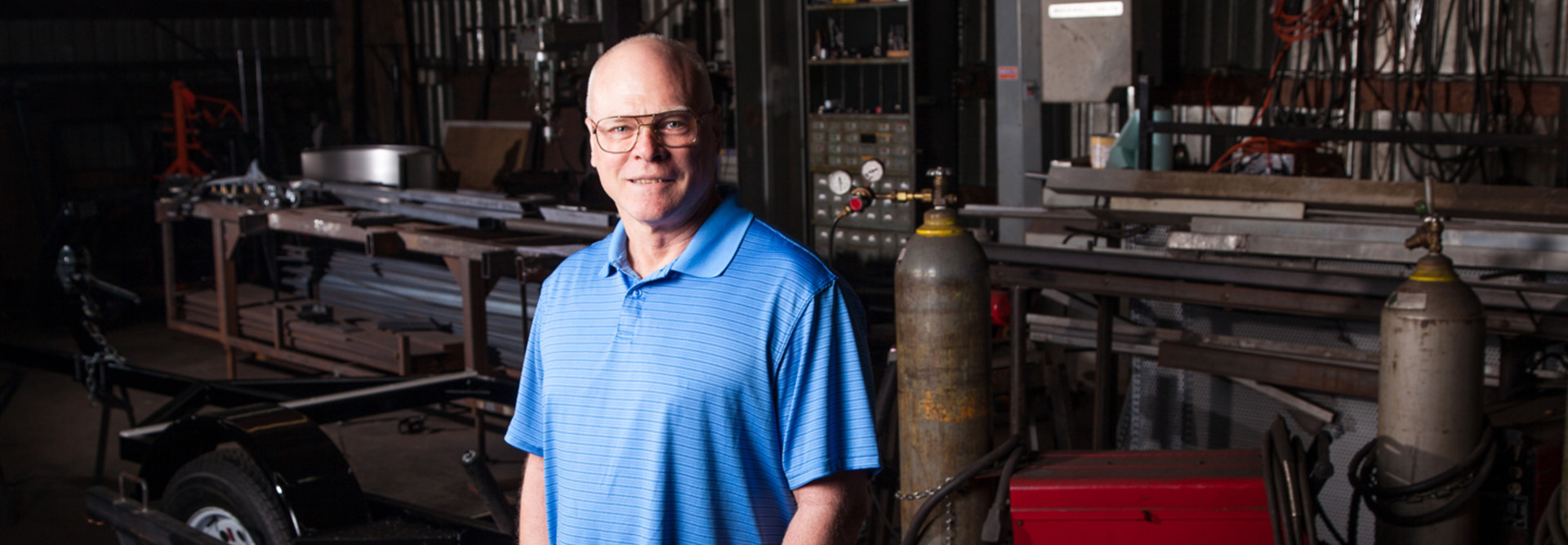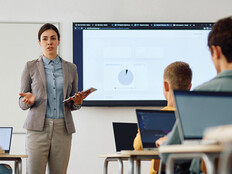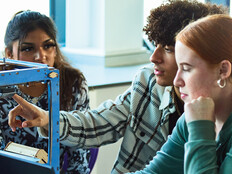3D Printing in the Classroom Adds a New Dimension to Education
When Ron Smith first saw a 3D printer in action, he knew the device belonged in his Engineering and Metal Fabrication program at Nestucca Junior/Senior High School in Cloverdale, Ore. The technology could guide students all the way through the manufacturing process — from concept to completion — and reward them with an object they could hold in their hands.
But it wasn’t until Smith had an Afinia 3D printer in his classroom that he realized its value as an educational tool. Computer-assisted design (CAD) software by itself is great, he says. But being able to bring those designs to life with a 3D printer adds a whole new dimension to the student experience.
“Motivating students is one of the biggest jobs in teaching,” Smith says. “It’s important that they learn to do technical drawings and to use the Inventor software, but when you make it come to life with the 3D printer and they can touch it and feel it, they want to do more and learn more.”
That level of interaction creates engagement, and it’s a big reason why more K–12 schools are investing in the technology, says Pete Basiliere, research vice president at Gartner.
“To be able to draft something with 3D CAD software and then physically output it is a tremendous complement to these programs,” says Basiliere. “3D printers in the schools help students think creatively. It’s a whole new medium with a new range of possibilities.”
Basiliere says it’s possible that broader adoption is on the horizon, especially as educators discover new and different ways to integrate the devices into existing curricula — though an emphasis on standardized testing could impede that process.
“The emphasis on preparing students for specific tests can mean there’s less time to explore tools like 3D printers, and slower recognition of what they can do for education,” he says.
3D Printing in the Classroom Provides Real-World Solutions
Educators say 3D printing in the classroom help students see the value of their education in the form of real-world problem-solving.
Smith explains how one teacher approached him about using the school’s 3D printer to fabricate a complicated steel part. The class drafted a model of the part, created a file and printed a plastic prototype. When the part didn’t work quite right the first time, the students checked the fit, made adjustments, then reprinted it.
Charles Hull invents the first commercial 3D printer, based on a process called stereolithography.
SOURCE: U.S. Patent 4575330
“After the second modification, it worked perfectly, and we could then fabricate the metal parts,” Smith says. “By using the 3D printer, we saved lots of time and frustration, and the students learned valuable lessons about modification and preparation.”
Nestucca Valley School District 101 serves 470 students in two schools over a 400-square-mile area on the northern Oregon coast. After graduation, most of these students enter the workforce, taking jobs in local industries such as dairy farming, fishing, logging or tourism. Smith says he uses his classes and the technology to open students’ eyes to other options.
“When we use tools like the 3D printer, I tell the really interested students that this is the type of stuff you will be doing in college and as a profession,” he says. “In that way, the printer helps them envision their futures as well as their designs. We only have 147 students in our high school and about 37 students per graduating class. Last year three of them wanted to go on to become engineers. That’s real success.”
Business Sense
In Campbell-Tintah Public School District in Campbell, Minn., 3D printing is an integral part of the high school business and technology curriculum. Teacher Richard Osman introduced a 3D printer into the district six years ago. The technology is now the centerpiece of a special six-week class unit.
“I tell the students that their company just bought a new piece of equipment and that we’ve got to get it up and running in two weeks and produce something with it in four,” Osman says. “I engage them in the problem-solving, in making the machine productive. They work together, and it works for different kids with many different abilities.”
Osman incorporates trips to local plants and engineering offices into his classes. The goal: to show students how 3D printing is used in industry. After the tours, students devise 3D printing projects that mimic what they’ve seen.
Campbell-Tintah PSD serves 160 pre-kindergarten through 12th-grade students, all in a single school building. The high school students get first crack at the 3D printer. Once they are proficient with the technology, they show the sixth-grade students how to use it.
“When the high school students can teach other kids, they really feel that they’ve achieved a level of mastery,” says Osman. “Their learning is reinforced, and the younger students get excited about their designs and the 3D printer.”
All that excitement comes at a cost, says Osman. The printers use a form of resin that costs $250 a roll, which puts a dent in his annual materials budget. Still, he says, the expense is worth it.
“If you put the right equipment in students’ hands at the right time, you can give them a glimpse of where the future is going,” Osman says.
All-Ages Show
3D printing in the classroom arrived two years ago at William Penn Charter School, a private pre-K–12 school in Philadelphia, after a parent loaned a Makerbot printer to the school’s Innovation Club.
“We saw how students were solving problems and then using the tool to develop and prototype the solutions,” says science teacher Corey Kilbane. “With those results, we were able to convince the school to get a 3D printer of its own.”
3D printing in the classroom has been used for projects at every grade level, including pre-kindergarten, where, for a unit on birds, Penn Charter students will print their own designs for nests, Kilbane says.
Younger students use a program called Tinkercad to create their designs, while older learners use more advanced software called SketchUp. Some projects are based on digital scans from other sources. For example, students in the upper school taking Advanced Placement American History used scans from the Smithsonian Institution to print replicas of life masks taken of Abraham Lincoln: one mask made at the time of his inauguration and the other just before his assassination.
“The students could have looked at pictures, but the life masks let them feel the deepening wrinkles on Lincoln’s face,” says Kilbane. “The kinesthetic interaction really conveys the toll the war took on him. It’s a great jumping-off point for other sources.”
Penn Charter partnered with The Widener Memorial School, a local public school for students with disabilities, on a project in which students designed and printed tools meant to assist those who can’t use computers in conventional ways.
While the technology has many potential applications for classroom use, especially for STEM education, Kilbane says finding 3D printing resources designed for genuine educational purposes can be tough.
“There are lots of resources for helping students print toys and novelties, but that’s not going to improve education,” he says. “We have to ask, what can we do with 3D printing that we couldn’t do otherwise? Could we hand kids Legos and do the same thing? If we ask and answer tough questions, 3D printing will be an increasingly valuable tool.”








